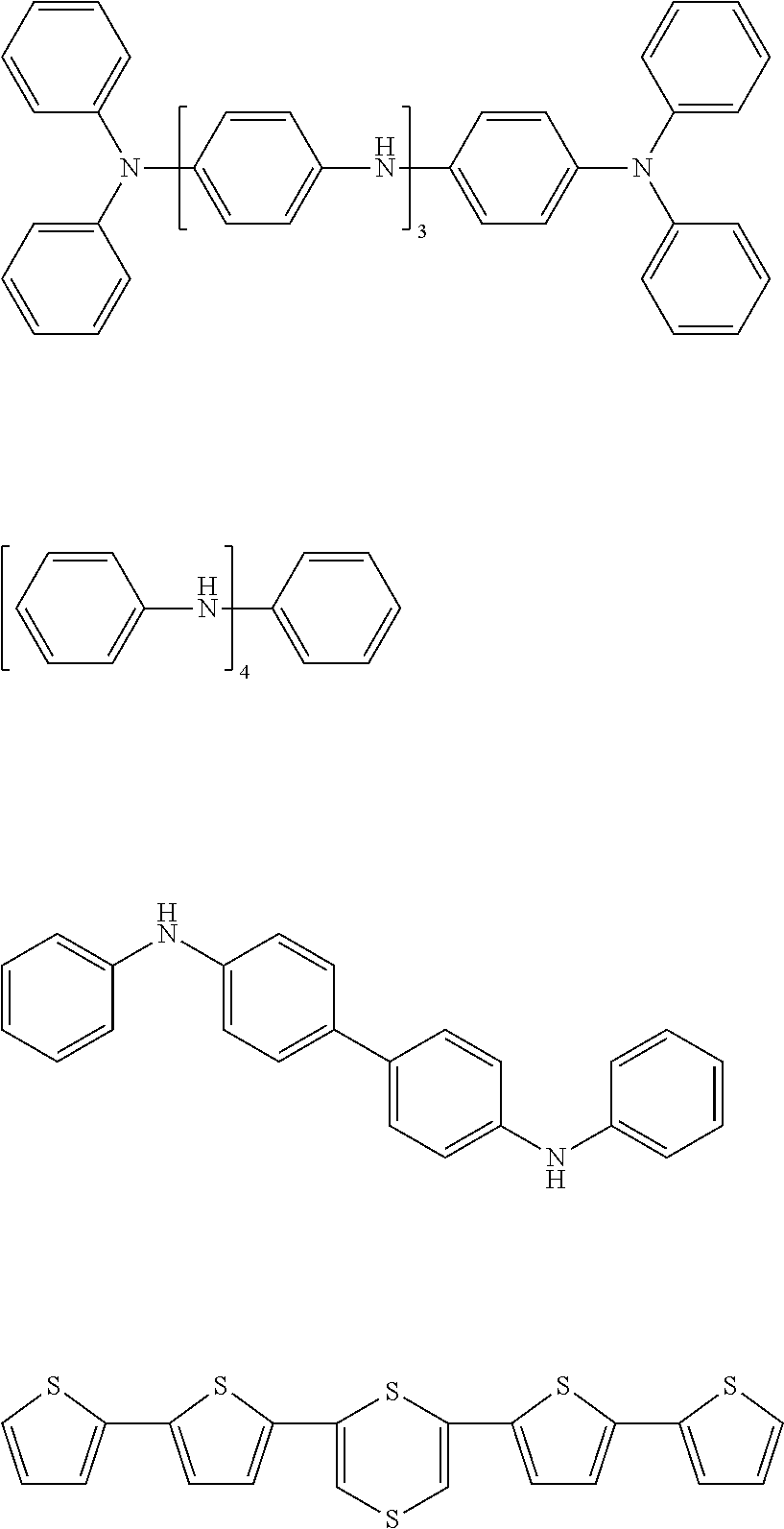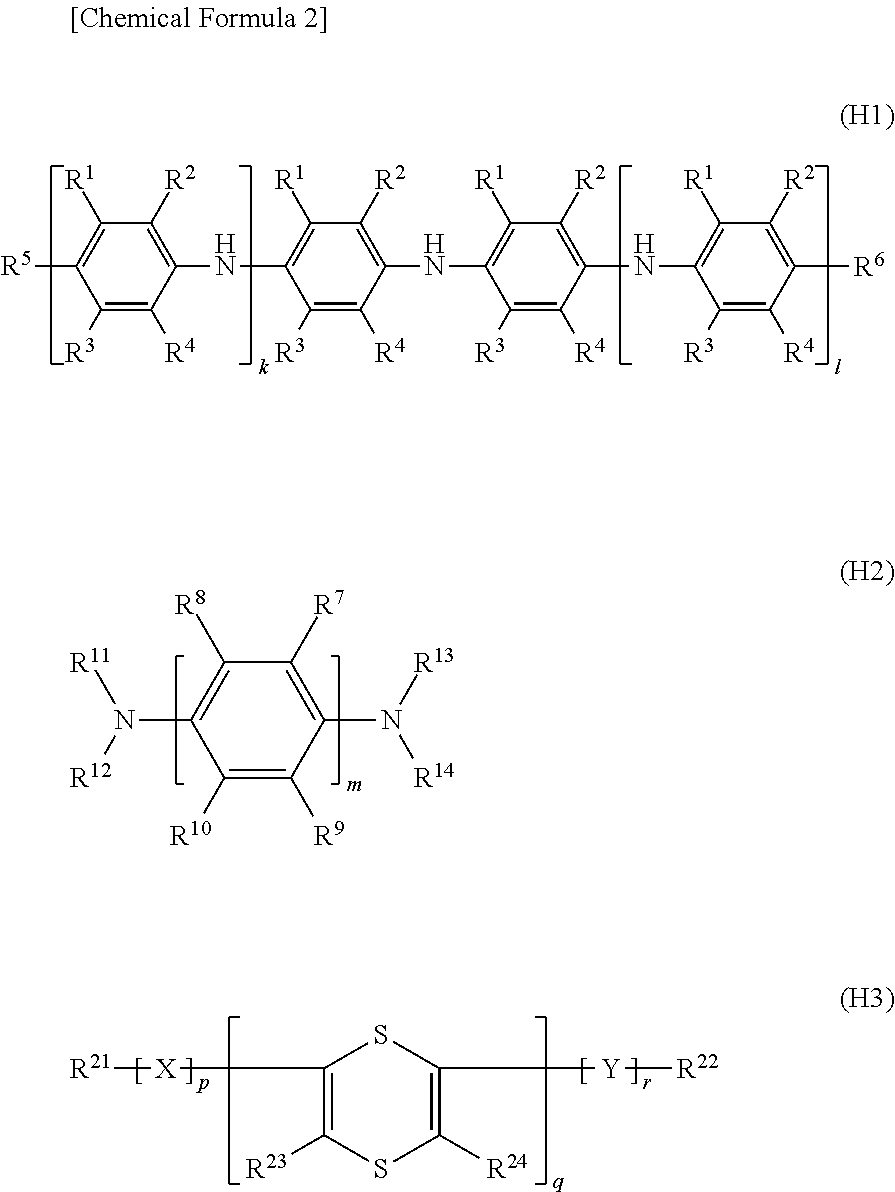Composition for forming hole collecting layer of photosensor element, and photosensor element
a technology of photosensor elements and collecting layers, which is applied in the direction of coatings, solid-state devices, semiconductor devices, etc., can solve the problems of accelerating device deterioration, high equipment cost, and high equipment cost, and achieves low dark current, high photoelectric conversion efficiency, and high uniform film formability.
- Summary
- Abstract
- Description
- Claims
- Application Information
AI Technical Summary
Benefits of technology
Problems solved by technology
Method used
Image
Examples
preparation example 1
[0133]Chlorobenzene (2.0 mL) was added to a sample vial containing 20 mg of PTB7 (available from 1-Material) and 30 mg of PC61BM (available from Frontier Carbon Corporation under the product name “nanom spectra E100”), and the vial contents were stirred for 15 hours on a hot plate set to 80° C. The resulting solution was then allowed to cool to room temperature, following which 60 μL of 1,8-diiodooctane (Tokyo Chemical Industry Co., Ltd.) was added and stirring was carried out, giving Solution A1 (a photoelectric conversion layer-forming composition).
[2] Preparation of Silane Solution
preparation example 2
[0134]Silane Compound Solution S1 was obtained by adding 0.717 mg (3.61 mmol) of phenyltrimethoxysilane (Shin-Etsu Chemical Co., Ltd.) and 0.394 mg (1.81 mmol) of 3,3,3-trifluoropropyltrimethoxysilane (Shin-Etsu Chemical Co., Ltd.) to 10.0 g of N,N-dimethylacetamide (DMAc) and stirring at room temperature.
[3] Preparation of Hole-Collecting Layer-Forming Compositions
working example 1-1
[0135]DMAc (3.33 g) and 2,3-butanediol (1.67 g) were added to a mixture of 67.1 mg (0.152 mmol) of the phenyltetraaniline of formula (d) above and 136.9 mg (0.152 mmol) of the arylsulfonic acid compound of above formula (D2) that was synthesized according to the method described in WO 2006 / 025342 (the same applies below), and the solids were dissolved by stirring at room temperature under ultrasonic irradiation. To this was added 5.0 g of cyclohexanol (CHN) and stirring was carried out, giving a light green-colored solution. The resulting light green-colored solution was filtered with a syringe filter having a pore size of 0.2 μm, giving Hole-Collecting Layer-Forming Composition B1.
[0136]The phenyltetraaniline of formula (d) above was synthesized according to the method described in Bulletin of Chemical Society of Japan, Vol. 67, pp. 1749-1752 (1994).
PUM
| Property | Measurement | Unit |
|---|---|---|
| boiling point | aaaaa | aaaaa |
| boiling point | aaaaa | aaaaa |
| viscosity | aaaaa | aaaaa |
Abstract
Description
Claims
Application Information
 Login to View More
Login to View More - R&D
- Intellectual Property
- Life Sciences
- Materials
- Tech Scout
- Unparalleled Data Quality
- Higher Quality Content
- 60% Fewer Hallucinations
Browse by: Latest US Patents, China's latest patents, Technical Efficacy Thesaurus, Application Domain, Technology Topic, Popular Technical Reports.
© 2025 PatSnap. All rights reserved.Legal|Privacy policy|Modern Slavery Act Transparency Statement|Sitemap|About US| Contact US: help@patsnap.com



